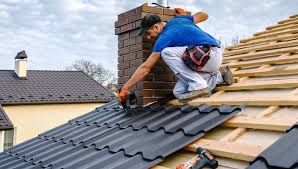It’s easy to think of a roof as a set-it-and-forget-it part of your home—something installed once and forgotten until leaks demand attention. In reality, roofing is a high-stakes system that quietly dictates your home’s energy efficiency, resale value, and structural integrity.
When the topic of roof replacements comes up, most homeowners immediately picture shingles curling in the sun, or a hailstorm forcing the issue. But there’s more to the story. In fact, many of the most important factors behind a roof’s failure begin long before water makes it into the attic.
Here’s what often goes unnoticed—and what should be part of every homeowner’s decision-making process before, during, and after a roof replacement.
1. Age Isn’t the Only Factor
It’s common to rely on age as the main indicator for when a roof needs to be replaced. And while age plays a role, it’s not the whole story. Some roofs degrade well before their expected lifespan due to poor installation, subpar materials, ventilation problems, or insufficient preventative maintenance.
In humid or wind-prone climates, roof systems may fail faster than expected. Even the best shingles won’t hold up if the underlayment wasn’t properly sealed or the flashing was installed incorrectly. That’s why regular inspections matter—they provide more context than a calendar ever could.
2. Ventilation Shapes Lifespan
The attic might not seem like a roofing concern at first glance, but improper ventilation is one of the most common and most overlooked causes of early roof failure. Without adequate airflow, heat builds up beneath the roof deck, baking the shingles from below and warping wood structures over time.
Poor ventilation also traps moisture from household activities—showers, cooking, laundry—which can lead to mold growth or ice damming in colder climates. These internal pressures wear down your roof invisibly, long before signs appear on the surface.
Replacing a roof without addressing ventilation is like repainting a car without fixing the engine. It may look fine, but the deeper problems are still there.
3. Roof Replacements Are an Energy Upgrade
Your roof isn’t just a shield from weather—it’s a thermal barrier. Older roofing systems tend to lack modern energy-efficiency features, leading to higher heating and cooling costs. Even minor insulation gaps or poor material choices allow heat to escape in winter and build up in summer.
Modern roof replacements often incorporate reflective materials, radiant barriers, or advanced underlayments that help stabilize indoor temperatures. These upgrades reduce HVAC strain and lower energy bills year-round.
It’s not about aesthetics—it’s about long-term savings. Choosing the right roofing materials can have just as much impact as replacing windows or upgrading appliances.
4. It’s a Strategic Moment to Rethink the Exterior
A roof replacement is one of the few moments where your home’s exterior is open for broader improvements. Consider it an opportunity, not just a repair.
It’s the perfect time to reassess adjacent systems—like your gutters, flashing, or even siding. Replacing or updating these components at the same time creates a unified protective shell and saves money in labor costs over time.
Gutter misalignment or aged siding can compromise your new roof’s performance. By thinking holistically, you extend the life of all exterior systems, not just the one above your head.
5. Preventative Maintenance Still Matters After Replacement
It’s tempting to think of a new roof as maintenance-free for the next 20 years. But skipping routine upkeep can shorten that lifespan quickly.
Clogged gutters, unchecked tree limbs, animal nests, or even missing nails on ridge vents can cause damage gradually. What begins as minor wear or blockage can become the source of major repair costs if left unchecked.
Preventative maintenance programs exist for this reason—to support the roof’s long-term performance with seasonal inspections and simple upkeep. These programs are especially important in regions where weather changes quickly or dramatically.
6. Not All Roof Repairs Mean Replacement
Sometimes, signs that look severe can be resolved without full replacement. Missing shingles, minor flashing gaps, or limited leaks might be handled through repairs if the roof’s structural integrity is intact.
However, this requires a professional assessment—not guesswork. Homeowners who delay action out of uncertainty often allow small issues to escalate, eventually requiring a full roof replacement they might have avoided.
The decision between roof repairs and replacement hinges on knowing what’s happening beneath the surface. That means catching problems early, and choosing repair when it’s still effective.
7. Metal Roofing Isn’t Just for Barns Anymore
One of the most under-discussed aspects of modern roof replacements is the rise of metal roofing for residential homes. No longer limited to barns or industrial buildings, metal roofing now comes in a range of colors, textures, and profiles that mimic traditional shingles or tiles.
Why make the switch? Longevity is a major factor—metal roofs can last 40 to 70 years. They’re also more energy-efficient, more resilient to high winds, and better at shedding snow in winter climates.
With improved materials and better insulation options, metal roofing has become a smart, forward-thinking choice. Many homeowners see it not as a luxury, but as a strategic investment.
8. The Long Game: Planning for Resale and Resilience
Even if you’re not planning to sell anytime soon, the state of your roof plays a role in your home’s future marketability. Buyers notice roof condition immediately—and even a slightly worn roof can become a negotiation point.
On the flip side, a recently replaced, well-documented roof offers reassurance to potential buyers. It signals that the home has been cared for, and that major future expenses have already been covered.
Companies like Emerald Roofing and Siding LLC understand that a roof is more than a structural feature—it’s a reflection of how a home is valued and maintained over time.
Conclusion: See the Whole Picture, Not Just the Surface
Replacing a roof isn’t just a reaction to failure—it’s a proactive decision that touches nearly every part of your home. It affects comfort, energy efficiency, aesthetics, resale value, and structural stability.
Too often, roof replacements in Rockland County are treated as isolated fixes. But when done thoughtfully, they’re part of a much larger system of care—one that includes gutters, siding, insulation, and ongoing maintenance.
So the next time you think about shingles, take a moment to consider what they’re really protecting—and what it will take to protect them in return.






